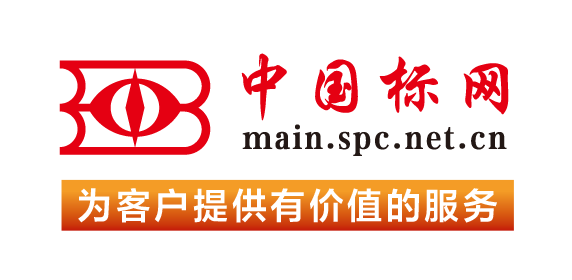【国外标准】 Standard Practice for Sample Selection of Debris Waste from a Building Renovation or Lead Abatement Project for Toxicity Characteristic Leaching Procedure (TCLP) Testing for Leachable Lead (Pb)
本网站 发布时间:
2024-02-28
开通会员免费在线看70000余条国内标准,赠送文本下载次数,单本最低仅合13.3元!还可享标准出版进度查询、定制跟踪推送、标准查新等超多特权!
查看详情>>
适用范围:
5.1 Waste samples collected using this practice provide representative samples for analysis in a laboratory using the TCLP.5.2 The TCLP is used to simulate the transfer of lead from buried lead-containing waste into the ground water system upon codisposal of the lead-containing waste and municipal solid waste in unlined solid-waste landfills. The TCLP attempts to simulate rain or ground water leaching, or both. For the procedure to yield a predictor of the subsurface (in-ground) leaching process, a representative sample of the volume of the waste must be selected and submitted for leaching and analysis. The result of the sampling, leaching, and analysis process is used to determine the waste handling and disposal protocols to be followed and to document compliance with applicable laws, regulations, and requirements. This practice addresses the sampling process by defining a component-volume-based method to collect and assemble a representative sample of a solid waste stream that may contain heterogeneous components.5.3 The collection of a volume-based sample of the waste stream is based on the fact that the TCLP leachate lead concentration limit, like other such TCLP limits, was developed based on the spatial dimensions of landfills.5.4 Individuals who use this practice are expected to be trained in the proper and safe conduct of sampling of lead-containing wastes, qualified/certified/licensed as required by those authorities having jurisdiction over such activities, and properly utilize tools and safety equipment when conducting these procedures.5.5 This practice may involve use of various hand and power tools for sampling the components of the waste. It is intended that such tools should be properly and safely used by persons trained and familiar with their performance and use.5.6 In general terms, building components are drilled, sawed, snipped, etc., to collect samples of the various components in proportion to the volume of those components in the entire building. The component samples are assembled, and the resulting assembled sample is analyzed according to the TCLP protocol.1.1 This practice describes a method for selecting samples of building components coated with paints suspected of containing lead. The samples are collected from the debris waste stream created during demolition, renovation, lead hazard control, or abatement projects. The samples are subsequently analyzed in the laboratory for lead.1.1.1 The debris waste stream is assumed to have more than one painted component, for example, metal doors, wood doors, and wood window trim.1.2 This practice is intended for use when sampling to test for lead only and does not include sampling considerations for other metals or for organic compounds. This practice also does not include consideration of sampling for determination of other possible hazardous characteristics of the waste.1.3 This practice assumes that the individual component types comprising the debris waste stream are at least partially segregated and that the volume of each type of component in the debris waste stream may be estimated.1.4 The values stated in SI units are to be regarded as standard. The values given in parentheses after SI units are provided for information only and are not considered standard.1.5 This standard does not purport to address all of the safety concerns, if any, associated with its use. It is the responsibility of the user of this standard to establish appropriate safety, health, and environmental practices and determine the applicability of regulatory limitations prior to use.1.6 This international standard was developed in accordance with internationally recognized principles on standardization established in the Decision on Principles for the Development of International Standards, Guides and Recommendations issued by the World Trade Organization Technical Barriers to Trade (TBT) Committee.
标准号:
ASTM E1908-20
标准名称:
Standard Practice for Sample Selection of Debris Waste from a Building Renovation or Lead Abatement Project for Toxicity Characteristic Leaching Procedure (TCLP) Testing for Leachable Lead (Pb)
英文名称:
Standard Practice for Sample Selection of Debris Waste from a Building Renovation or Lead Abatement Project for Toxicity Characteristic Leaching Procedure (TCLP) Testing for Leachable Lead (Pb)标准状态:
Active-
发布日期:
-
实施日期:
出版语种:
- 推荐标准
- ASTM 51401-21 Standard Practice for Use of a Dichromate Dosimetry System
- ASTM 51956-21 Standard Practice for Use of a Thermoluminescence-Dosimetry System (TLD System) for Radiation Processing
- ASTM A1010/A1010M-24 Standard Specification for Higher-Strength Martensitic Stainless Steel Plate, Sheet, and Strip
- ASTM A1016/A1016M-24 Standard Specification for General Requirements for Ferritic Alloy Steel, Austenitic Alloy Steel, and Stainless Steel Tubes
- ASTM A105/A105M-24 Standard Specification for Carbon Steel Forgings for Piping Applications
- ASTM A1064/A1064M-24 Standard Specification for Carbon-Steel Wire and Welded Wire Reinforcement, Plain and Deformed, for Concrete
- ASTM A108-24 Standard Specification for Steel Bar, Carbon and Alloy, Cold-Finished
- ASTM A1080/A1080M-24 Standard Practice for Hot Isostatic Pressing of Steel, Stainless Steel, and Related Alloy Castings
- ASTM A1090/A1090M-19(2024) Standard Specification for Forged Rings and Hollows for Use as Base Plates in Power Transmission Structures
- ASTM A1115/A1115M-24 Standard Practice for Construction of Mechanically Stabilized Earth Walls with Inextensible Soil Reinforcement
- ASTM A1128-24 Standard Specification for Stainless Steel Shielded, Rubber Gasketed Couplings Having an Integral Restraint Feature for Joining Hubless Cast Iron Soil Pipes and Fittings Where External Restraint Is Required
- ASTM A179/A179M-24 Standard Specification for Seamless Cold-Drawn Low-Carbon Steel Heat-Exchanger and Condenser Tubes
- ASTM A234/A234M-24 Standard Specification for Piping Fittings of Wrought Carbon Steel and Alloy Steel for Moderate and High Temperature Service
- ASTM A242/A242M-24 Standard Specification for High-Strength Low-Alloy Structural Steel
- ASTM A249/A249M-24a Standard Specification for Welded Austenitic Steel Boiler, Superheater, Heat-Exchanger, and Condenser Tubes
 我的标准
我的标准 购物车
购物车 400-168-0010
400-168-0010














